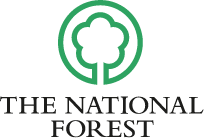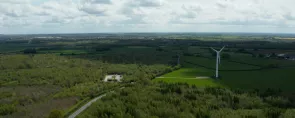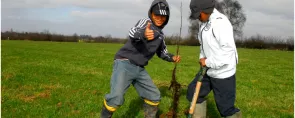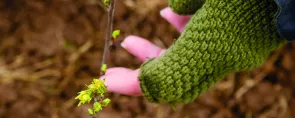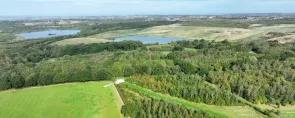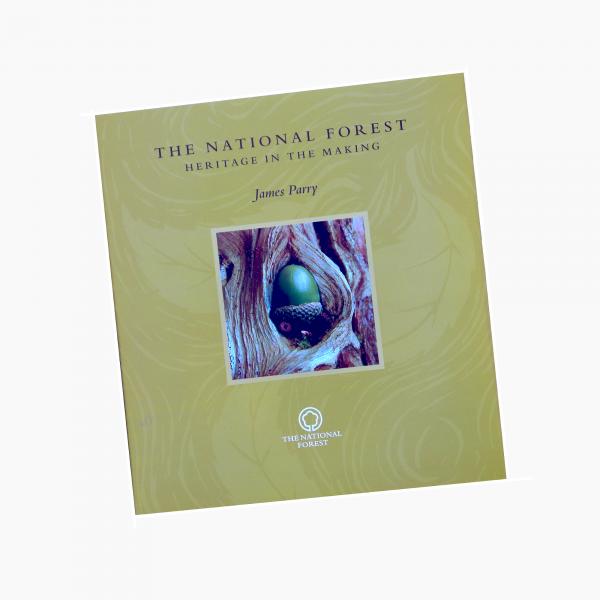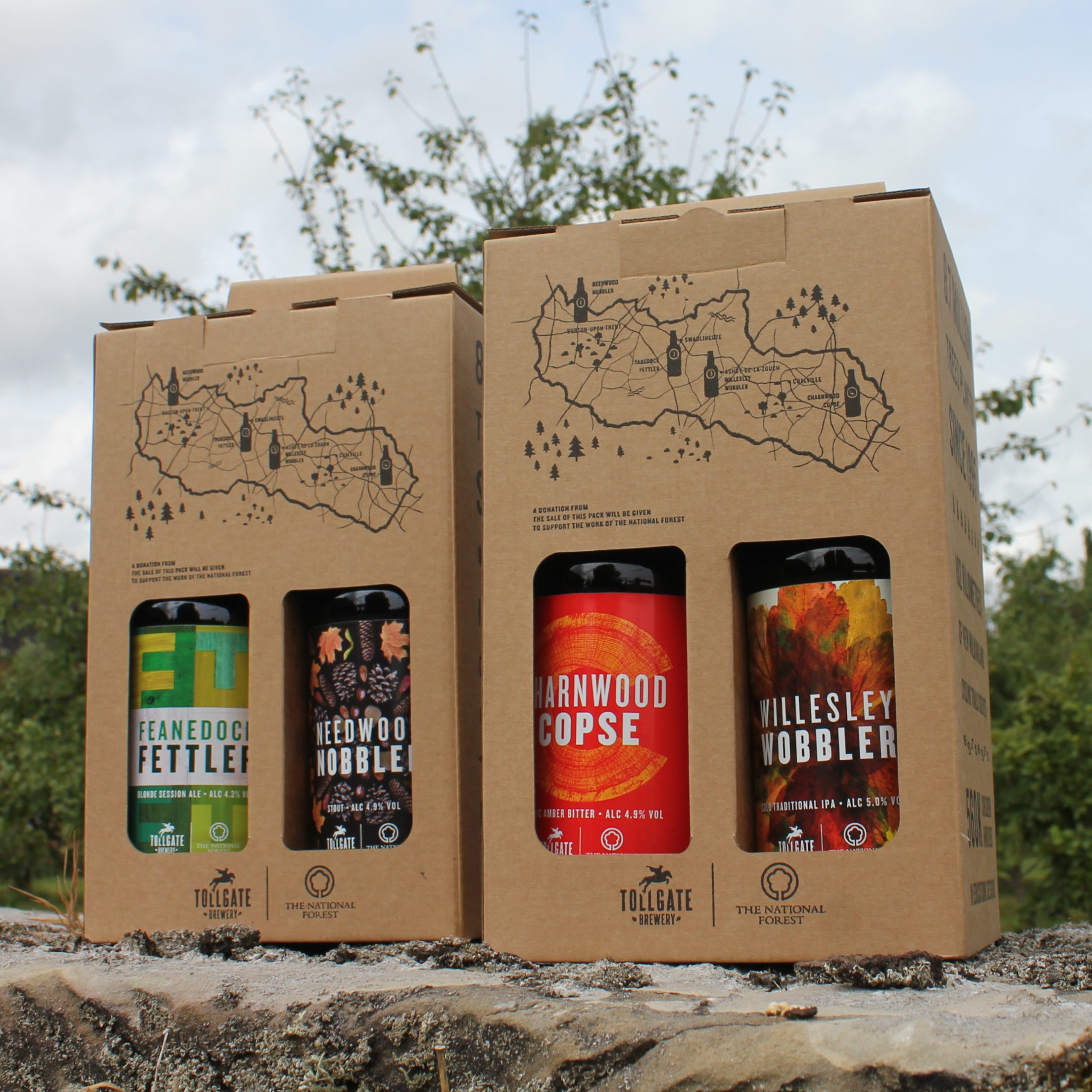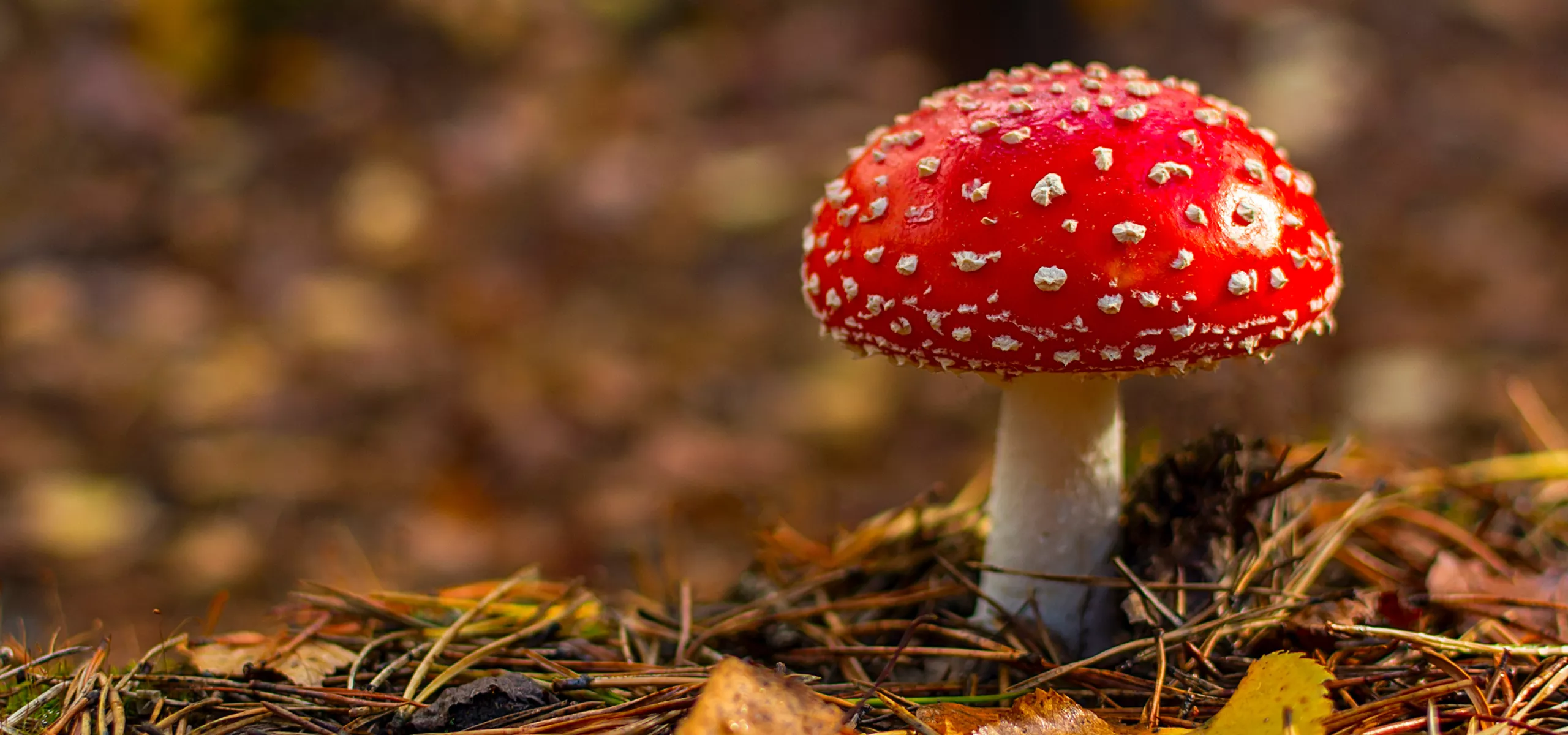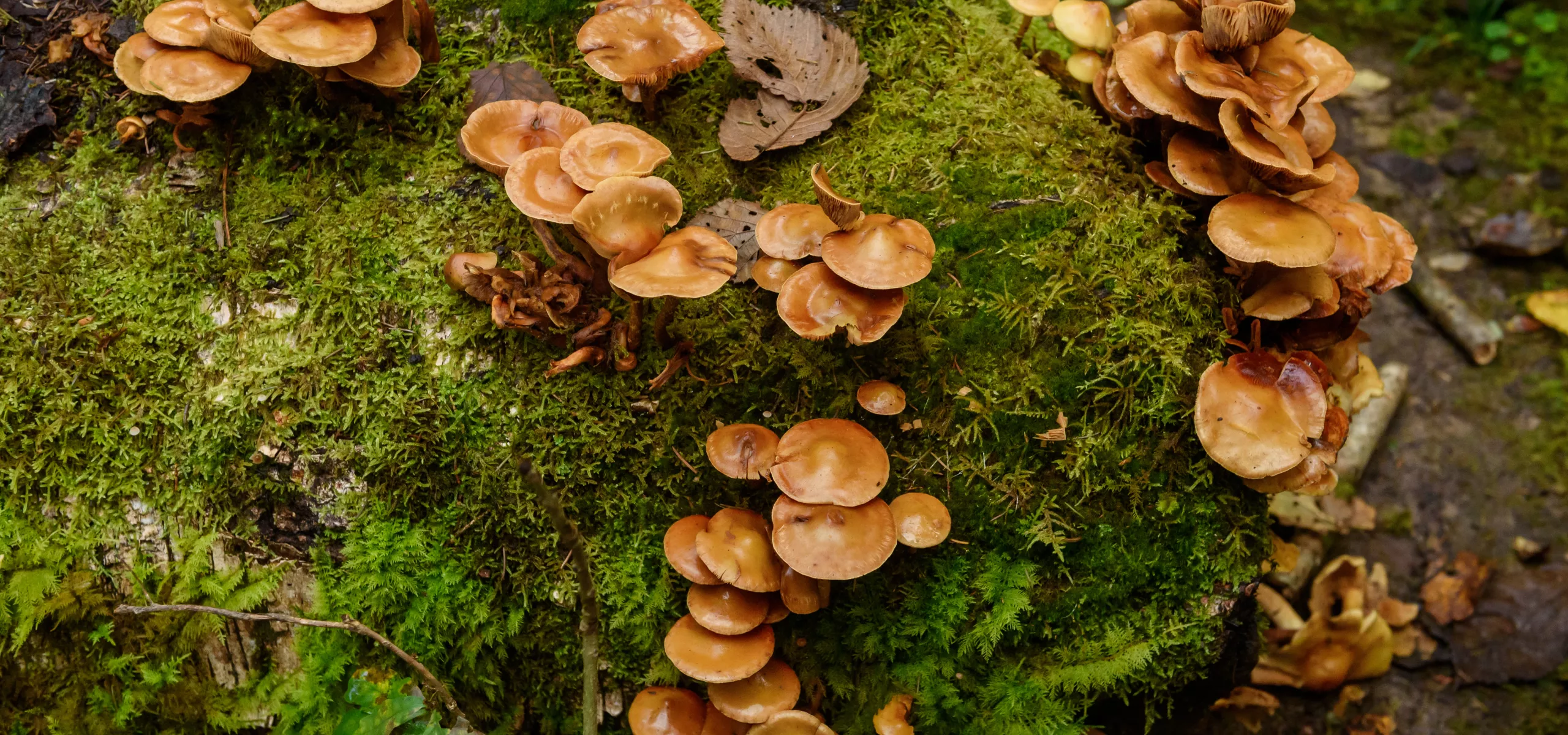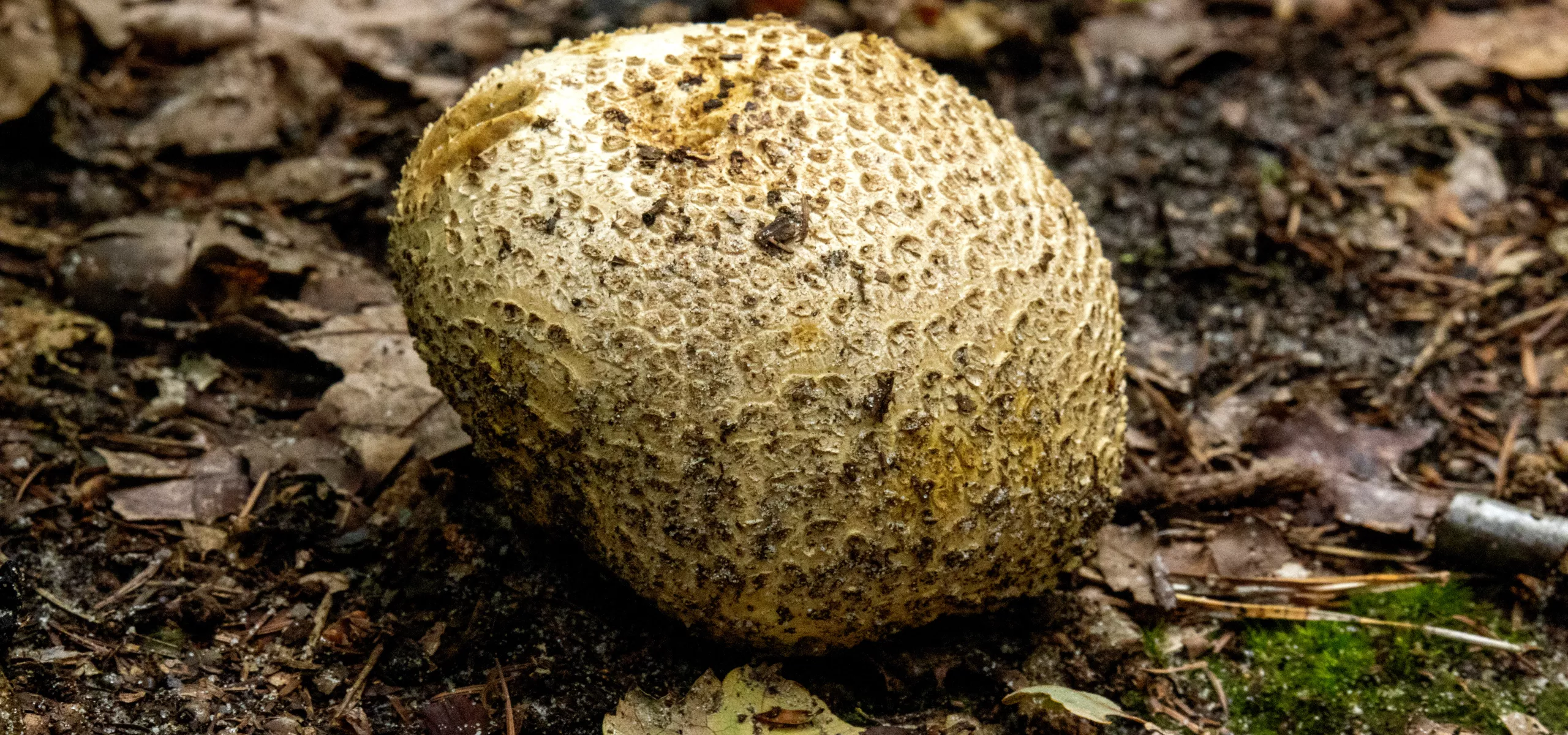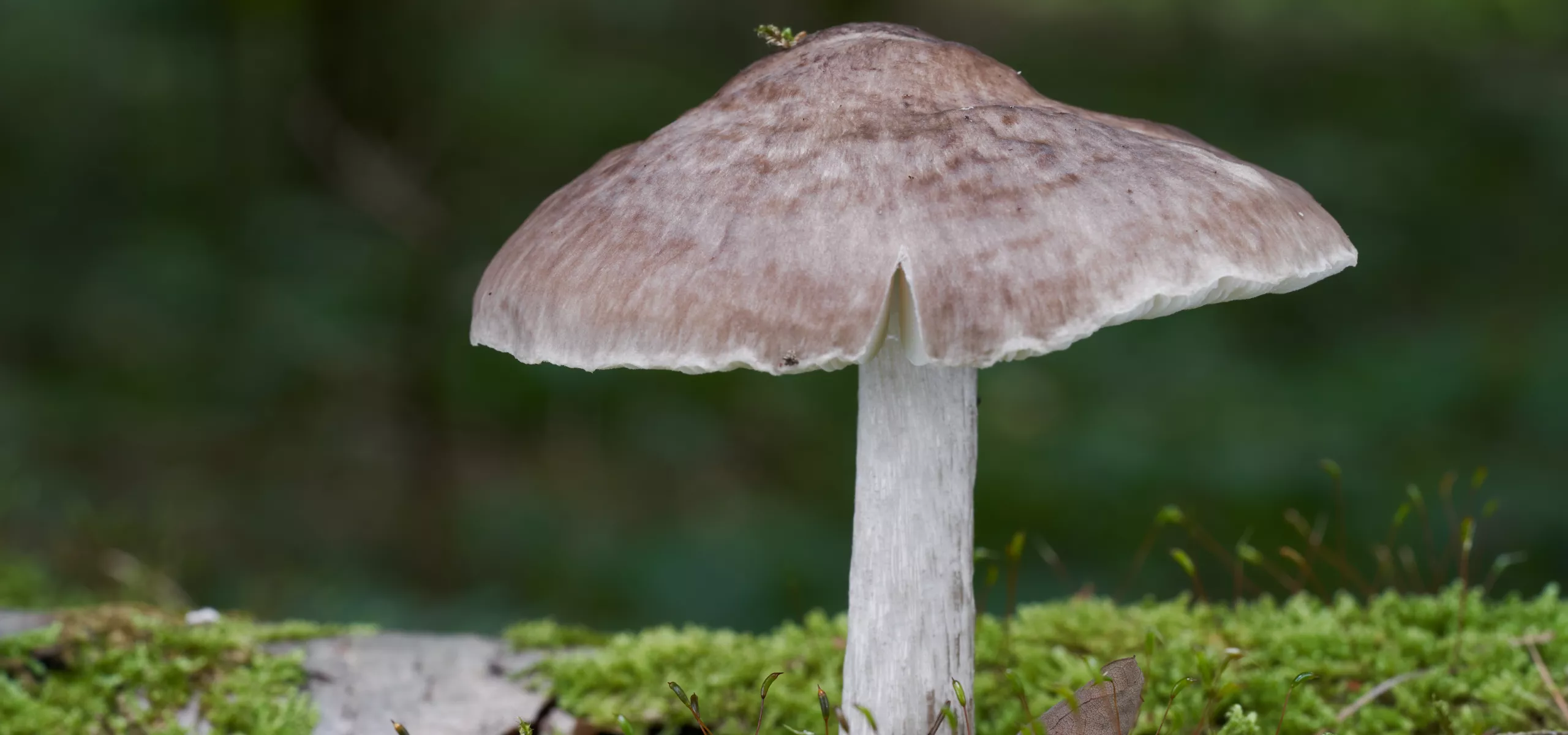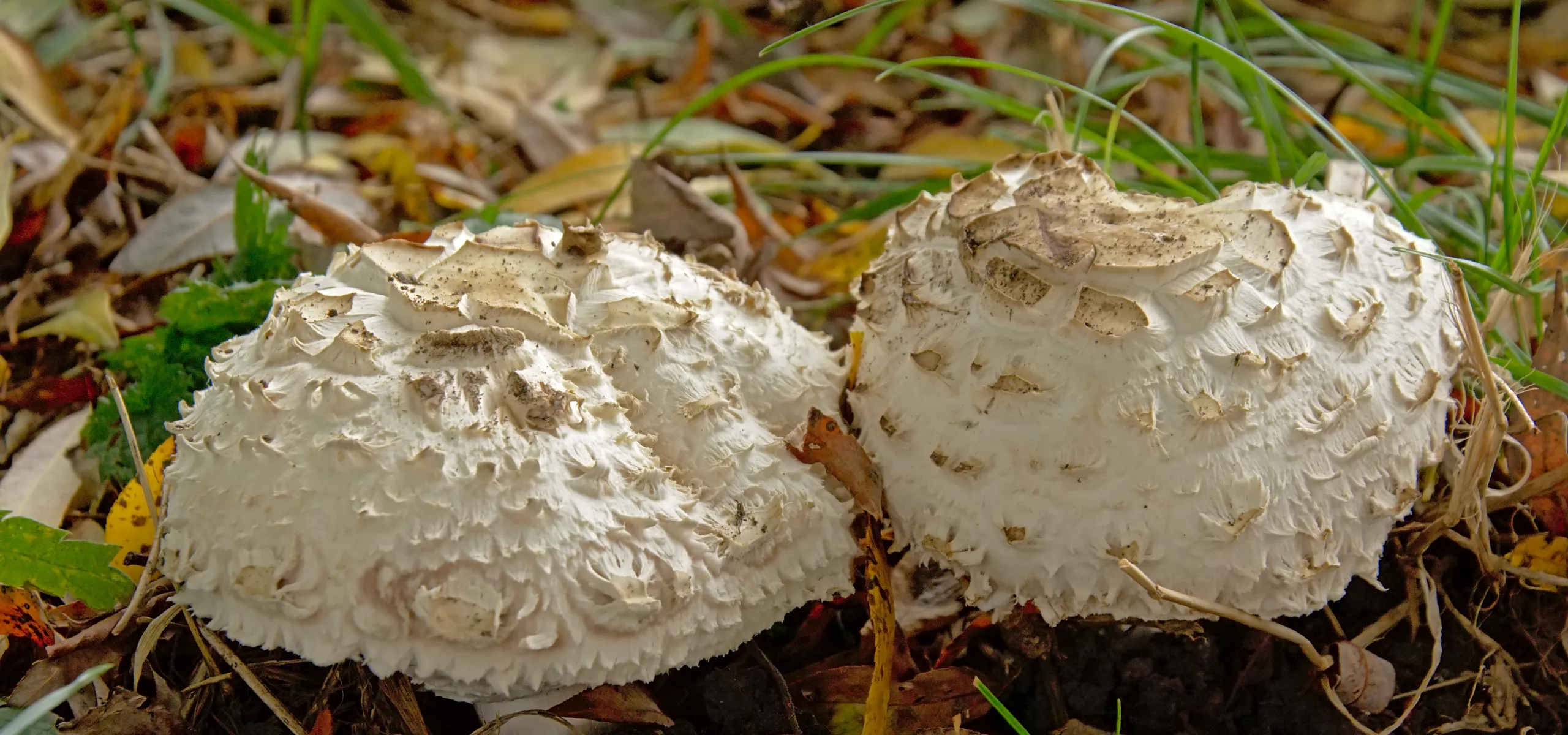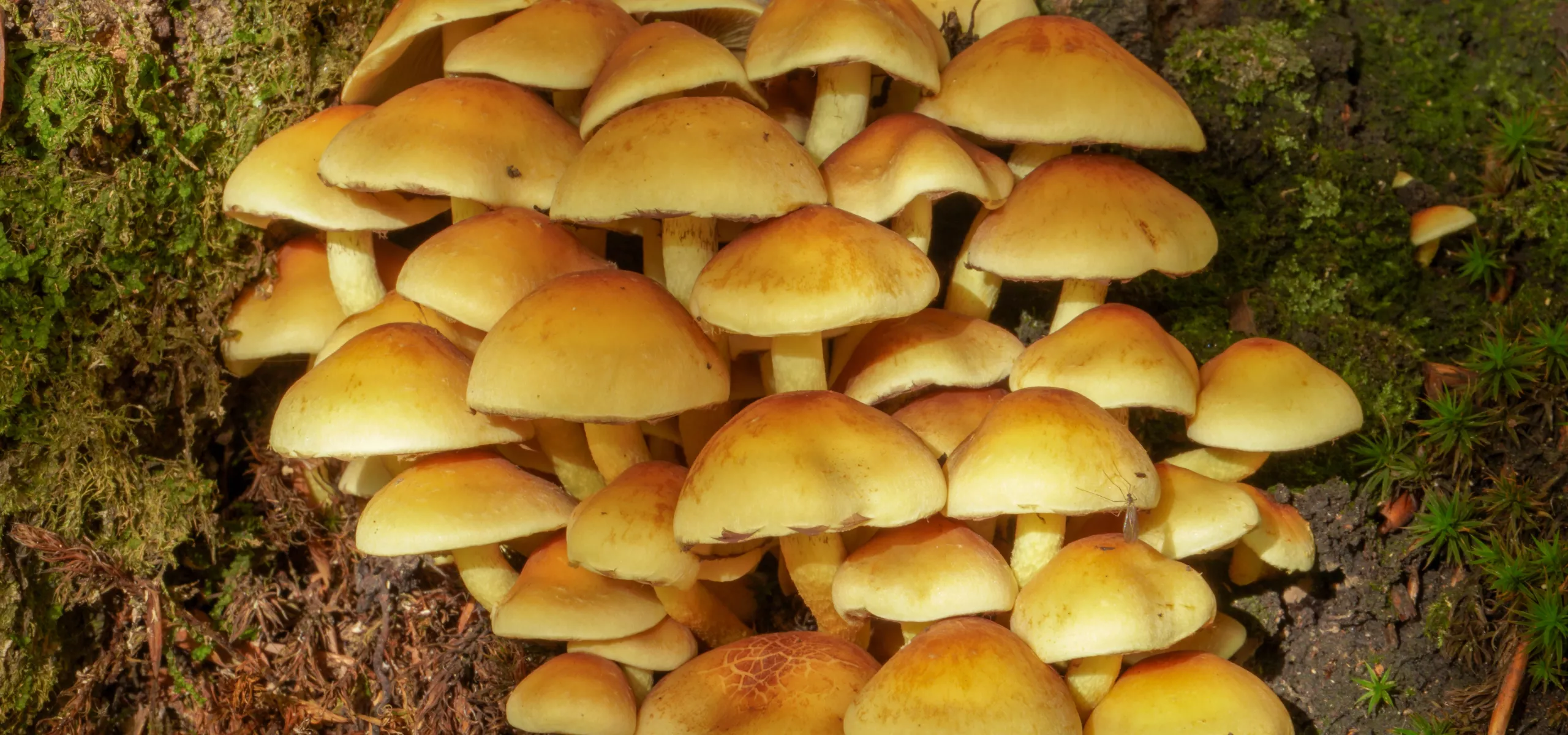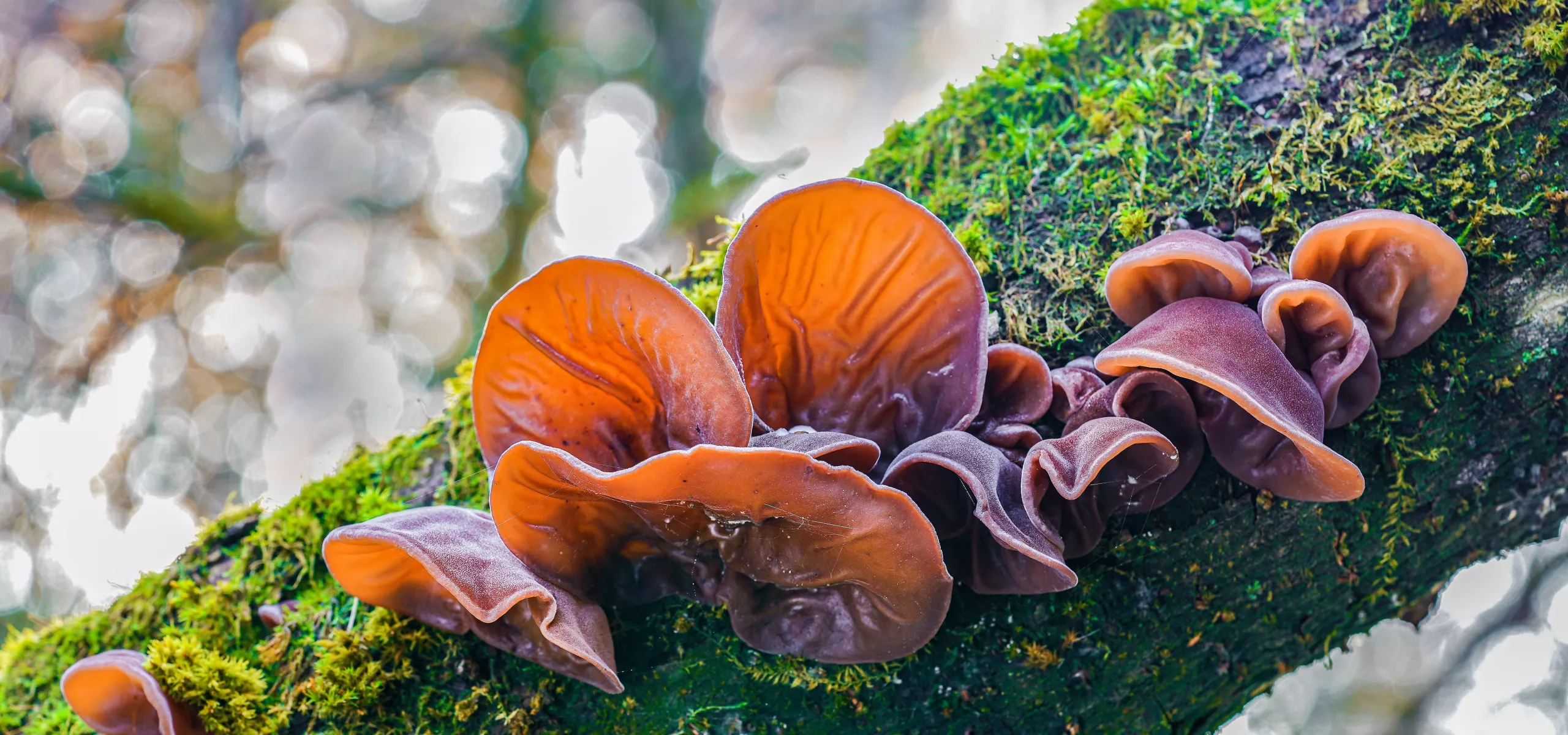Fungi play a key role in woodland ecosystems by recycling nutrients, forming partnerships with plants, and creating habitats for other creatures. While we usually notice mushrooms, which are the fruiting bodies of fungi, the real work is done by the mycelium, a vast underground network of thread-like structures.
Mycelium spreads through the soil, breaking down dead plants and animals in a process called decomposition. This returns essential nutrients, like carbon and nitrogen, back to the soil, helping trees and plants thrive.
Overall, fungi and their mycelium are crucial to the Forest’s health. They recycle nutrients, help trees grow, and create homes for other species.
So next time you take a walk through the National Forest in autumn, take a moment to appreciate the fungi beneath your feet. They are doing the essential work of keeping the Forest alive.
Join us as we uncover some of the key species you might encounter on your autumn walks through the Forest.
Fly Agaric (Amanita muscaria)
Perhaps the most iconic of all fungi, the fly agaric stands out with its vivid red cap adorned with white spots. This species, often associated with fairy tales and folklore, can be spotted in woods, particularly under silver birch, pine, or spruce trees. Though strikingly beautiful, this mushroom is toxic if consumed.
Shaggy Ink Cap (Coprinus comatus)
Known for its cylindrical, shaggy cap that eventually dissolves into an inky black substance, the shaggy ink cap is a common sight in grassy areas of the Forest during autumn. It’s also known as lawyer’s wig, as the spores drip away from the cap. This fungus plays an important role in breaking down organic material, enriching the soil as they decompose.
Honey Fungus (Armillaria mellea)
A formidable force in the fungal kingdom, the honey fungus can often be found growing in clusters around the base of trees or on stumps. Recognisable by its honey-coloured cap and black boot-lace mycelium, this species is known for being parasitic, sometimes causing significant damage to trees. Despite its aggressive nature, it’s an important species for the Forest’s life cycle, contributing to the breakdown of dead wood and recycling nutrients back into the ecosystem.
Common Earthball (Scleroderma citrinum)
Looking much like a potato nestled into the woodland floor, the common earthball is another autumnal resident of the Forest. Its tough, yellow-brown skin hides a spongy, dark interior. Unlike some other puffballs, this species is inedible, and when disturbed, it releases a cloud of spores into the air.
Wood Blewit (Clitocybe nuda)
The wood blewit is a distinctive and colourful mushroom that graces the Forest floor from September through the colder months. Its lavender-blue cap and stem make it a striking find amid the browns and yellows of the autumn leaves. It typically grows in leaf litter or decaying wood, playing its part in breaking down organic material and enriching the soil.
Amethyst Deceiver (Laccaria amethystina)
A jewel of the Forest, the amethyst deceiver stands out with its deep purple colour, though it can fade over time. This small mushroom can be found among leaf litter, often near to beech.
Deer Shield (Pluteus cervinus)
A common and widespread mushroom during autumn, the deer shield is often found on decaying wood. Its broad, brown cap and pinkish gills are characteristic, and it’s a vital decomposer. By breaking down dead wood, the deer shield helps maintain the health of the Forest, returning essential nutrients to the soil.
Shaggy Parasol (Chlorophyllum rhacodes)
Appearing from August through to October, the shaggy parasol is a large, stout mushroom with a distinctive scaly cap and a thick, white stem. This fungus prefers to grow in woodland clearings and along the edges of paths.
Beefsteak Fungus (Fistulina hepatica)
Growing on oak trees and occasionally chestnuts, the beefsteak fungus is a sight to behold. Its fleshy, reddish-brown fruiting body resembles raw meat, and when cut, it even "bleeds" a red juice. Appearing from late summer into autumn, this parasitic fungus causes brown rot in its host tree.
Sulphur Tuft (Hypholoma fasciculare)
This vibrant yellow mushroom is easily spotted in the Forest, often growing in dense clusters on decaying wood. Despite its attractive appearance, the sulphur tuft is highly toxic. It plays a vital role in breaking down dead wood, helping to recycle nutrients back into the soil.
Jelly Ear (Auricularia auricula-judae)
Growing predominantly on elder trees, the jelly ear fungus is a curious and jelly-like mushroom that closely resembles an ear. Found year-round but more prominent in the autumn months, this fungus has been used in traditional medicine for centuries.
Overall, fungi and their mycelium are crucial to the Forest’s health. They recycle nutrients, help trees grow, and create homes for other species.
So next time you take a walk through the National Forest in autumn, take a moment to appreciate the fungi beneath your feet. They are doing the essential work of keeping the Forest alive.
If you want to support biodiversity in the National Forest, please consider donating to help us continue in our efforts to protect nature and wildlife by planting trees and creating more habitats for them to thrive.
A special thanks to local fungi expert, Beverley Rhodes.
